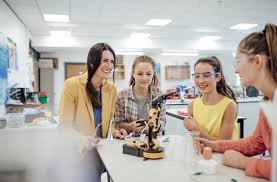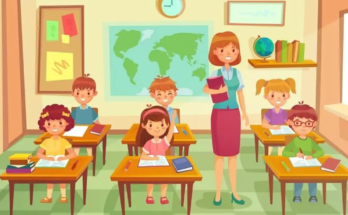Introduction:
Gifted and talented programs in primary education play a vital role in identifying, nurturing, and supporting the unique abilities and potential of exceptional learners. In this guide, we’ll explore the importance of gifted and talented programs and discuss effective strategies for providing enrichment, acceleration, and support for gifted students in primary schools.

Importance of Gifted and Talented Programs:
Gifted and talented programs serve students who demonstrate exceptional abilities, talents, or potential in one or more areas, such as intellectual ability, creative thinking, academic achievement, leadership, or artistic talent. These programs provide opportunities for gifted students to engage in challenging and enriching learning experiences that meet their unique needs, interests, and abilities. Gifted and talented programs also promote equity, excellence, and diversity in education by recognizing and supporting the full range of students’ talents and abilities.
Components of Gifted and Talented Programs:
Gifted and talented programs may include a variety of components to meet the diverse needs of exceptional learners. These components may include:
- Enrichment Activities: Enrichment activities provide gifted students with opportunities to explore and pursue their interests, passions, and talents beyond the regular curriculum. These activities may include specialized classes, clubs, competitions, projects, mentorships, internships, and extracurricular programs in areas such as STEM (science, technology, engineering, and mathematics), humanities, fine arts, and leadership.
- Acceleration Options: Acceleration options allow gifted students to progress through the curriculum at a faster pace or to skip grade levels based on their abilities and readiness. These options may include subject acceleration, grade skipping, dual enrollment, Advanced Placement (AP) courses, International Baccalaureate (IB) programs, early college programs, and other advanced coursework options tailored to students’ academic strengths and interests.
- Individualized Learning Plans: Individualized learning plans (ILPs) are personalized plans that outline the goals, objectives, and strategies for supporting the academic, social, and emotional development of gifted students. ILPs are developed collaboratively by educators, parents, and the student and may include academic goals, enrichment activities, acceleration options, and social-emotional supports tailored to the student’s needs and interests.
- Flexible Grouping Strategies: Flexible grouping strategies allow gifted students to work with like-minded peers and engage in challenging and collaborative learning experiences. These strategies may include ability grouping, cluster grouping, peer mentoring, cooperative learning, and cross-grade or cross-age grouping to provide opportunities for gifted students to work together, support each other, and learn from one another.
- Social-Emotional Support: Social-emotional support services address the unique social and emotional needs of gifted students, including issues such as perfectionism, asynchronous development, underachievement, peer relationships, and identity development. These services may include counseling, peer support groups, social skills training, and opportunities for self-reflection and self-awareness to help gifted students navigate the challenges and opportunities of being intellectually gifted.
Effective Strategies for Supporting Gifted and Talented Students:
To provide effective support for gifted and talented students in primary education, educators can implement the following strategies:
- Comprehensive Identification Process: Implement a comprehensive identification process to identify gifted and talented students from diverse backgrounds and populations. Use multiple measures, including assessments, observations, portfolios, nominations, and performance-based tasks, to identify students’ strengths, interests, and potential.
- Differentiated Instruction: Differentiate instruction to meet the diverse learning needs, interests, and abilities of gifted students. Provide opportunities for independent study, choice-based learning, project-based learning, and problem-based learning that allow gifted students to pursue their passions and extend their learning beyond the regular curriculum.
- Culturally Responsive Practices: Incorporate culturally responsive practices into gifted and talented programs to recognize and celebrate the diversity of students’ talents, backgrounds, and experiences. Provide opportunities for gifted students from underrepresented and marginalized groups to see themselves reflected in the curriculum, materials, and enrichment activities.
- Collaboration and Partnerships: Collaborate with families, community organizations, businesses, and higher education institutions to provide additional resources, opportunities, and support for gifted and talented students. Partner with experts, mentors, and professionals in various fields to expose gifted students to real-world experiences, role models, and career pathways aligned with their interests and aspirations.
- Ongoing Professional Development: Provide ongoing professional development opportunities for educators to build their knowledge, skills, and expertise in gifted education. Offer training on topics such as identification, differentiation, talent development, social-emotional support, and culturally responsive practices to support educators in meeting the diverse needs of gifted students.
Conclusion:
In conclusion, gifted and talented programs play a crucial role in recognizing, nurturing, and supporting the unique abilities and potential of exceptional learners in primary education. By providing enrichment, acceleration, individualized support, flexible grouping, and social-emotional services tailored to the needs of gifted students, schools can create inclusive and supportive learning environments that empower all students to reach their full potential. Together, we can cultivate excellence, foster creativity, and inspire lifelong learning in gifted and talented students. Thank you for joining us on this exploration of gifted and talented programs in primary education.



